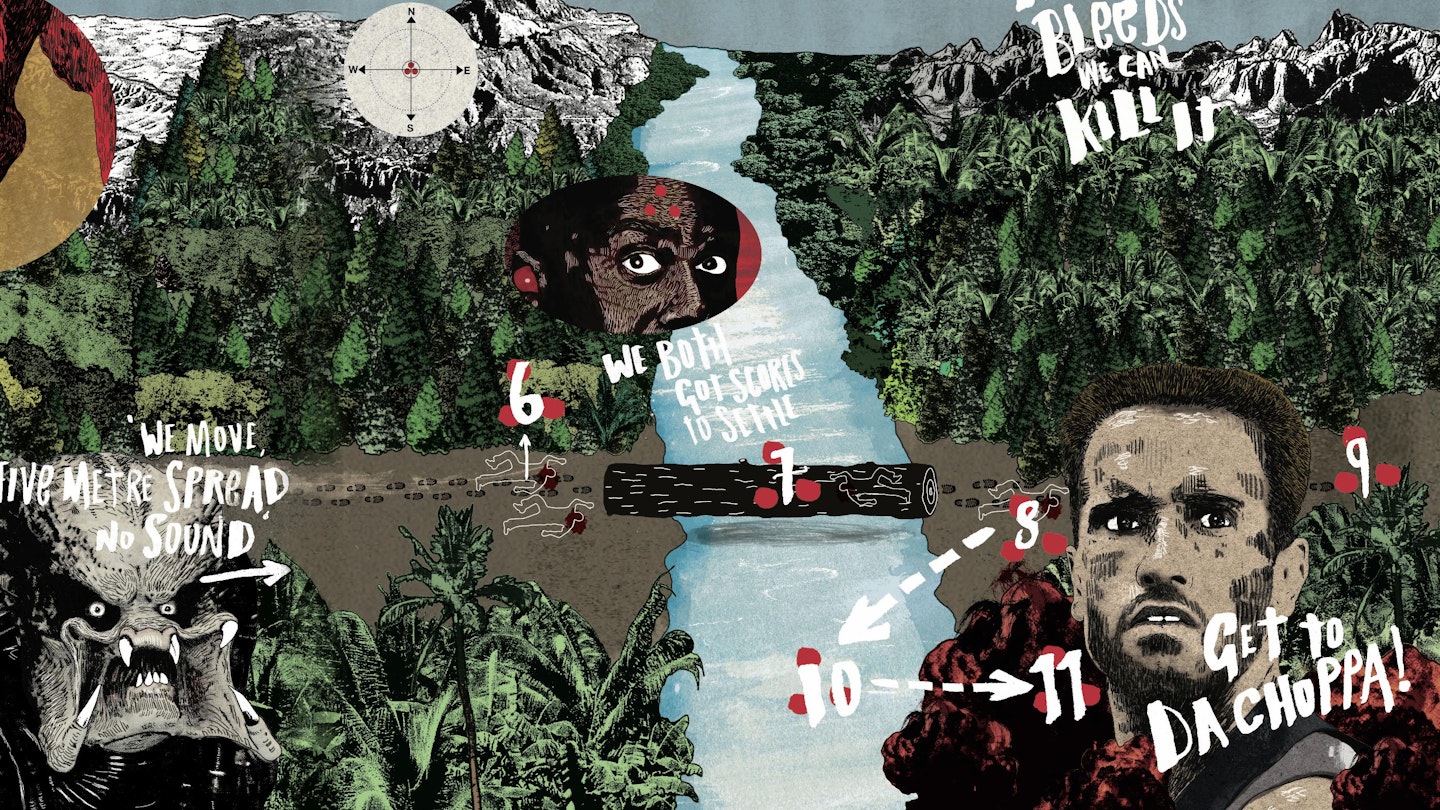A version of this article first appeared in Empire magazine{
Predator landed on planet earth in 1987, two years after the plentiful death-quips and chain-mail wife-beaters of the much loved, absurd, epochal Commando. Mapping it from base camp to extraction point suggests a simple A-to-B story, but John McTiernan’s jungle rumble turns out to be a smarter film than its apparent macho ’80s action formula admits, not to mention Arnold Schwarzenegger’s greatest on-screen challenge thus far. As The Terminator he’d been dismantled by Michael Biehn, but Predator’s seven-foot star-beast would give him the pasting of his career as a hero and ultimately run away with the franchise. As he stood, covered in mud and wounds, in the ground-zero ashes of a once verdant patch of rainforest, it wasn’t really clear if Arnold had won at all…
Base camp
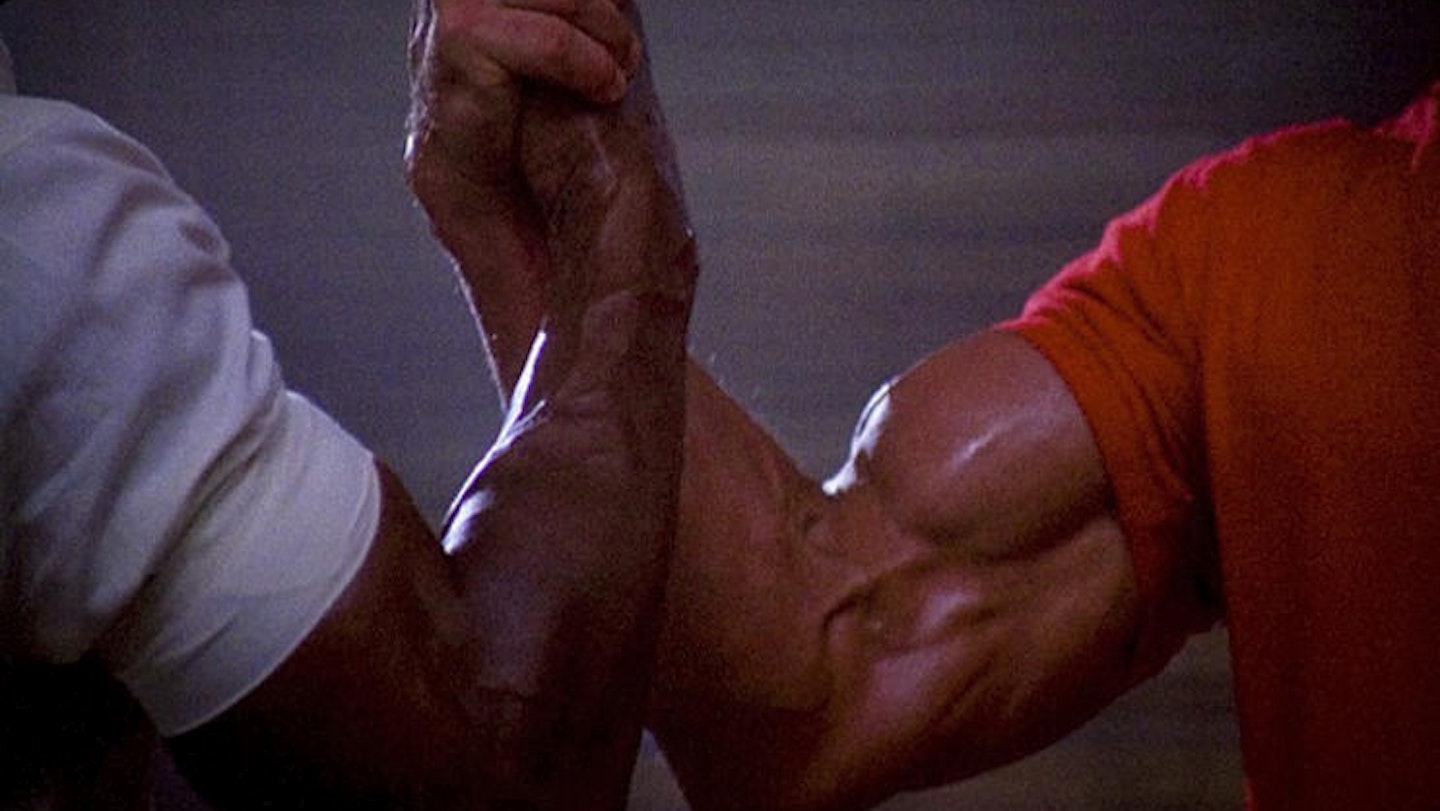
That scene is just laughably macho.
Much has been written - not all of it serious – about the homoerotic undertones of Predator, and while some of it's a stretch, it was nevertheless foremost in director John McTiernan's mind to parody the posturing of the action genre as much as celebrate it. "That scene at the beginning, where Carl (Weathers, as Dillon) and Arnold (Dutch) crash their arms together and start wrestling, is just laughably macho," groans editor Mark Helfrich, "That's exactly what McTiernan wanted. We knew it was going to be one of those moments where the audience roll their eyes and applaud at the same time, and it worked that way. It was all just about extending those moments and making them as brawny as possible. All that was designed."
The drop off
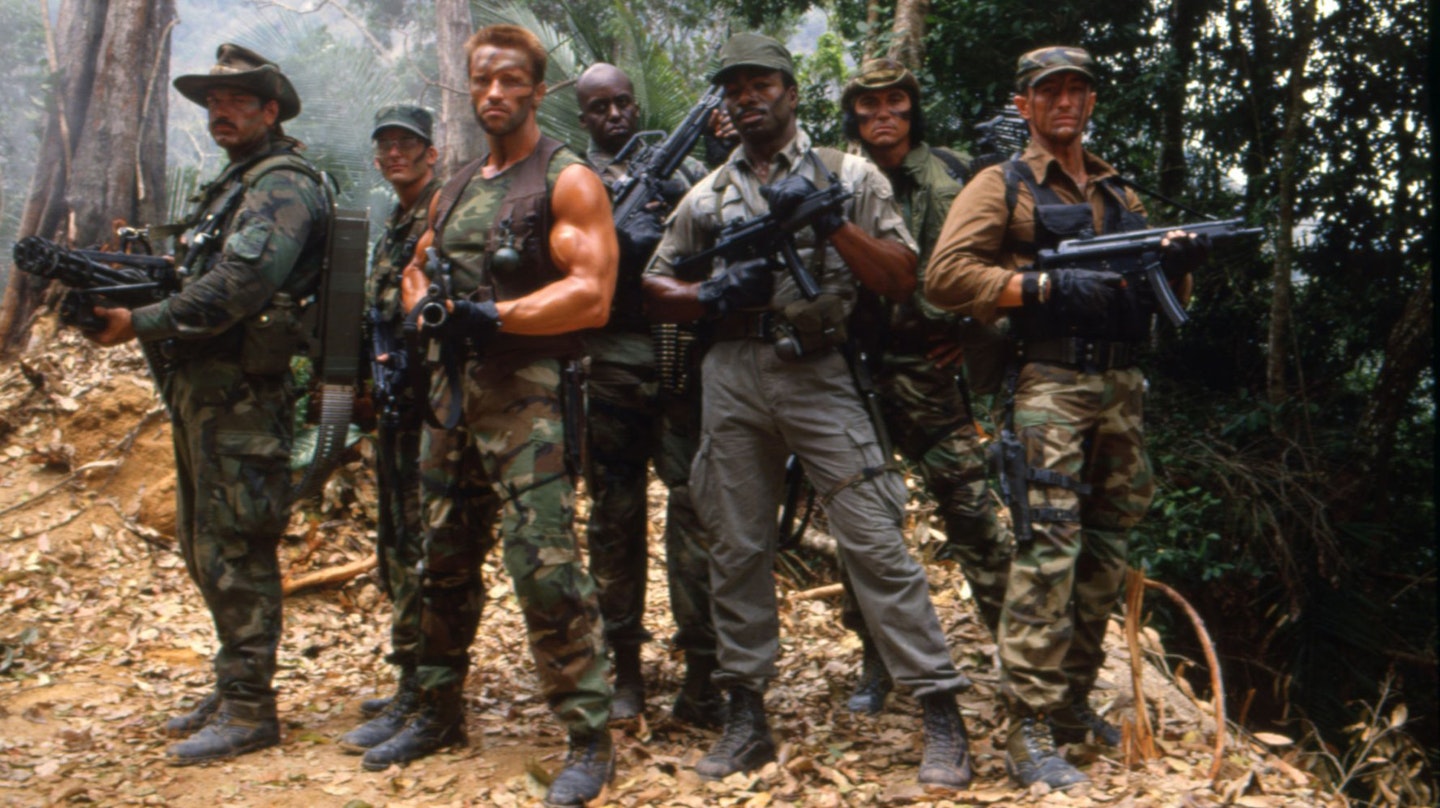
Where are we? In terms of physical locations, Predator was shot in Mexico: specifically in Jalisco, Palenque and Puerto Vallarta. Narratively, the terrain is rockier. General Phillips (R. G. Armstrong) points to a map on which the Chapada Das Mangberias mountain range is clearly visible, which would place the action in central Brazil. Mark Verheiden’s comics for Dark Horse meanwhile, give the location as Colombia, and the novelisation says we’re in Guatemala. The latter makes the most sense, both in terms of the CIA black-ops that were going down there in the 1980s, and in terms of the geography, since it’s right next to Mexico, possibly the "border" that Philips is talking about. But the book’s initial helicopter journey from base camp to drop-off seems to take us from Panajachel Dock to Usumacinta, which would mean they start and end in Guatemala and don’t cross a border at all.
The answer is perhaps that we’re not actually anywhere real. "Predator is set in Val Verde," believes Stephen E. de Souza, who invented the fictional South American banana republic for Commando and revisited it in several other projects subsequently. NECA's recent Predator action figures also toe this line on their packaging. "I was surprised to discover that Val Verde even has a Wikipedia page," de Souza tells us. "If that country existed, they’d build a statue of me!"
To the skinned corpses
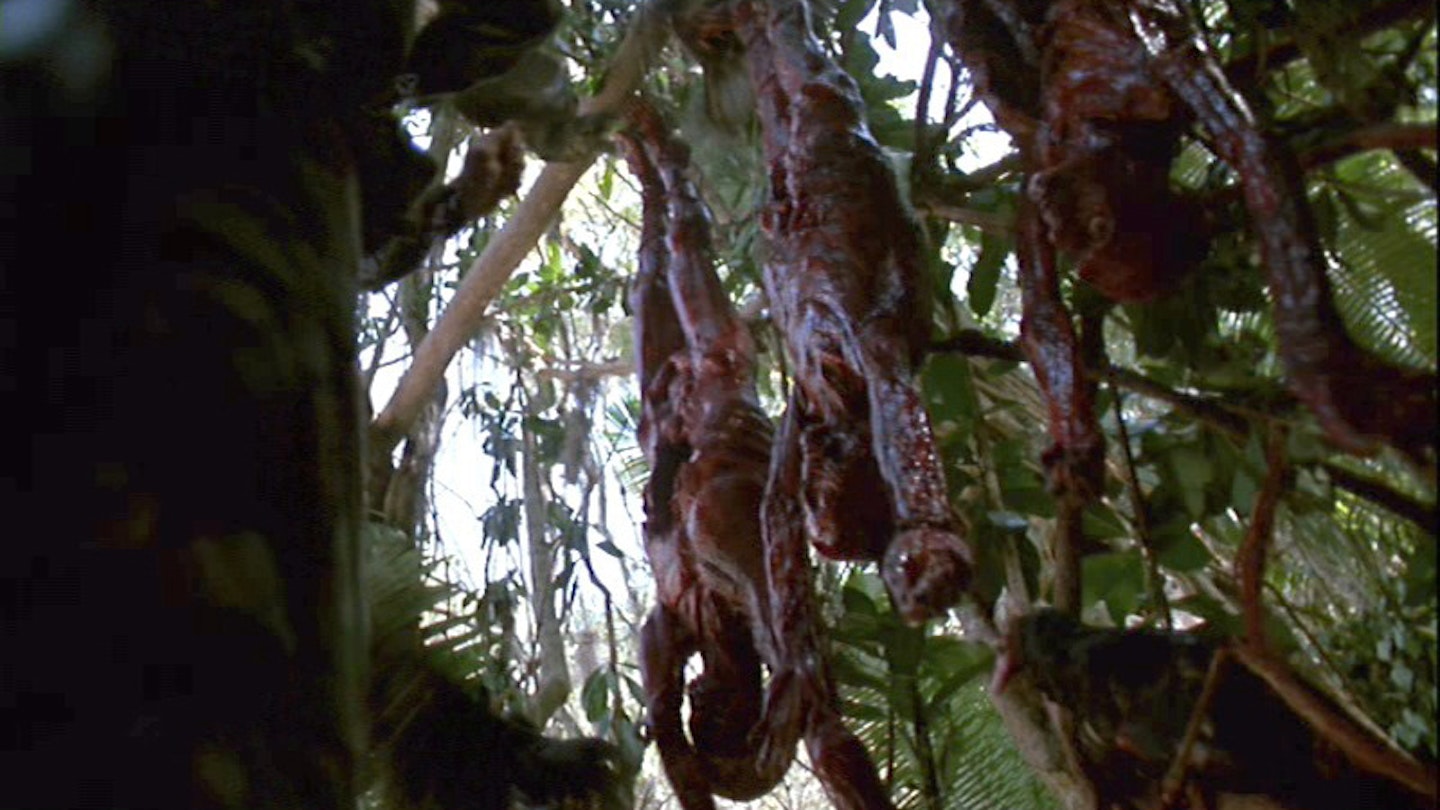
"There was definitely a subversive agenda," editor Helfrich tells Empire. "John McTiernan's credo was that rules are only made to be broken. The whole idea was that these were the toughest guys that nobody could stop, but the Predator stopped them all." The platoon members are an extraordinary collection of hardasses. Carl Weathers was a former professional American footballer, already known as Rocky's legendary nemesis Apollo Creed. Sonny Landham (Billy) and Bill Duke (Mac) were familiar action stalwarts. Richard Chaves (Poncho) and Jesse Ventura (Blain) were genuine Vietnam vets; the Thomas brothers said that, in an earlier era, the film would have been 'Nam-based. Even Lethal Weapon writer Shane Black - placed on set to play Hawkins in case last-minute rewrites were needed ("As if that script needed any work," Black scoffed) - didn't seem out of place. "Shane isn't a macho guy, but he can write it," laughs Helfrich. "He can hang with those guys easily."
The guerilla camp battle
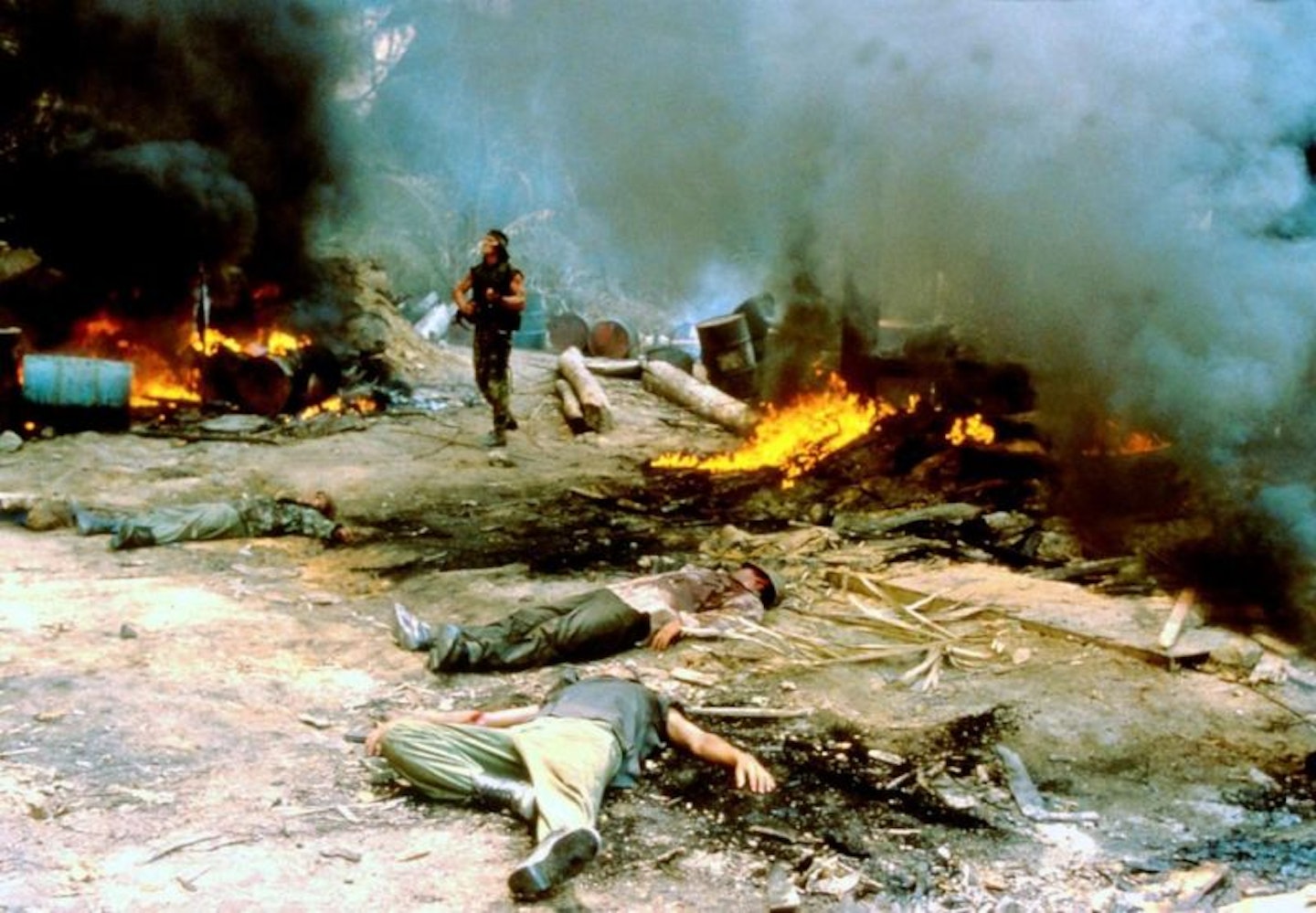
Predator's principal action scenes were shot by stunt coordinator/second-unit director Craig R. Baxley (he'd later direct the likes of Action Jackson and Stone Cold). McTiernan growls about this sequence on the DVD commentary - "I think the crew had all come from The A-Team or something" – but, says Baxley, "had I not had a TV second-unit crew that had worked well together
previously, we could not have accomplished what we did. I was very passionate that the action on Predator should be cutting edge. Basically, every stunt has been done before. The challenge is in finding a combination of different elements to create something that looks and feels new. It's about execution. McTiernan was very confident. He had a lot of great ideas, and as a filmmaker it's wonderful to have ideas, but you also have to know how to execute."
Ol' Painless
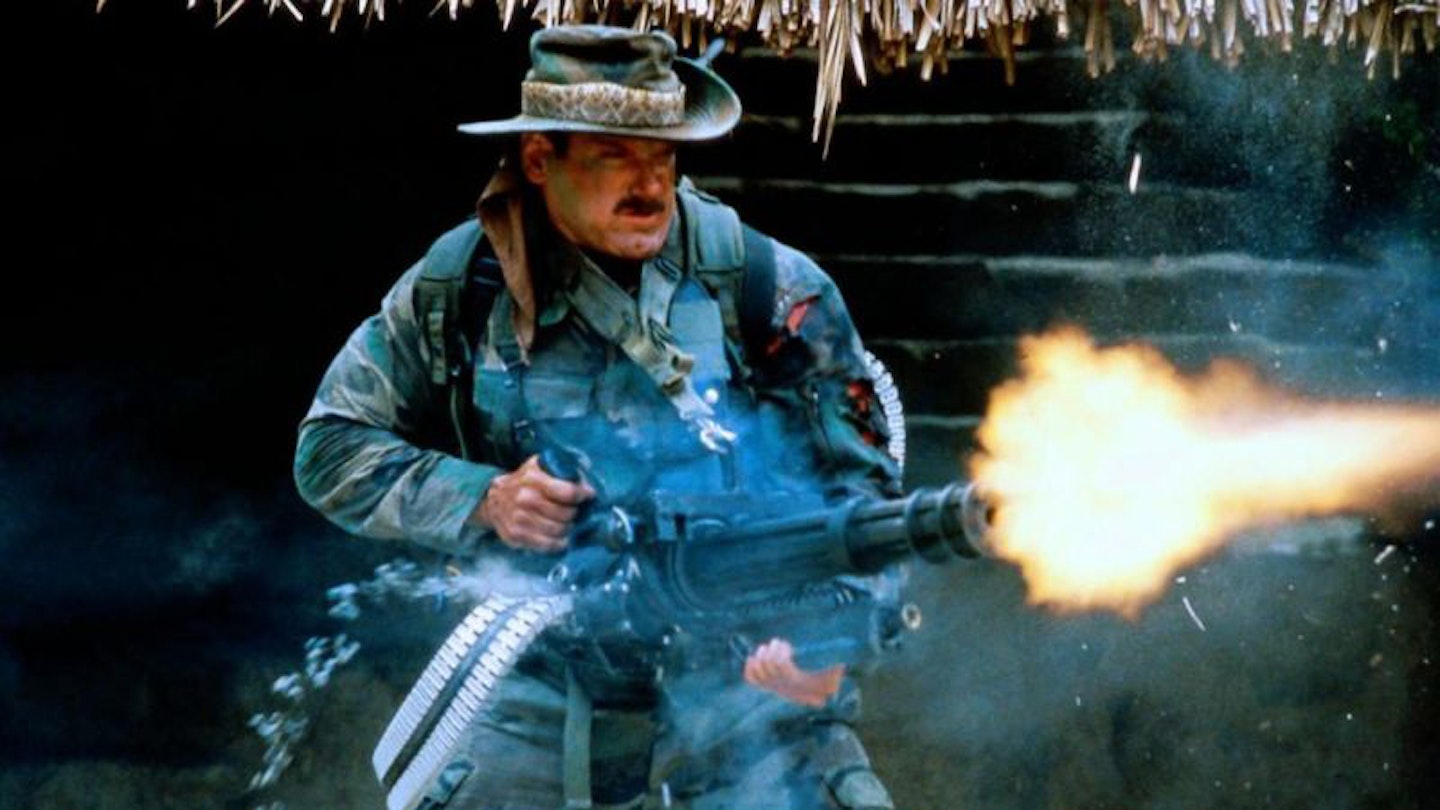
McTiernan has talked about this famous scene as representing the opposite of what it appears to show. "I had a feeling people had a perverse fascination with guns firing," he recalled. "So I created this sequence where they take all of their guns and they blaze away and flatten the jungle. I was taking the piss, as the Australians say. The whole point is the impotence of all of the guns. It was exactly the opposite of what I believed I was being hired to sell."
I had a feeling people had a perverse fascination with guns firing.
The iconic Ol’ Painless, the not-so-mini 7.62mm M134 Minigun hefted by Ventura and Duke, is explicitly part of that joke. Designed for mounting on helicopters, an ordinary mortal (or even an extraordinary one like a massive professional wrestler) would struggle to lift it, certainly couldn’t aim it, couldn’t fire it without being blown backwards off his feet by massive recoil, couldn’t possibly carry enough ammunition to fire it for more than a couple of seconds, and would end up knee deep in bullet casings that would have torn him to shreds as they were ejected. It also needs a power source: three truck batteries for preference. "It’s ridiculous,” chuckles McTiernan, “but in an odd way it was very safe. It couldn’t end up aiming where you didn’t want it because it wouldn’t move..."
"That’s a scene I’m particularly proud of," Helfrich tells Empire. "It required a lot of editorial trickery to extend it, like flopping the shots (turning them back-to-front), magnifying the frame composition, speeding the shots up, or printing them backwards in order to give them extra punch and intensity. Bill still 'firing' the gun after the bullets were all spent was an idea I came up with when I constructed the scene. I used outtakes when the gun didn't fire to over-extend the carriage rotation at the end, and then I added a whirring sound over the reaction shots and inserts, prolonging the moment. It worked very well dramatically."
Exit Mac and Dillon
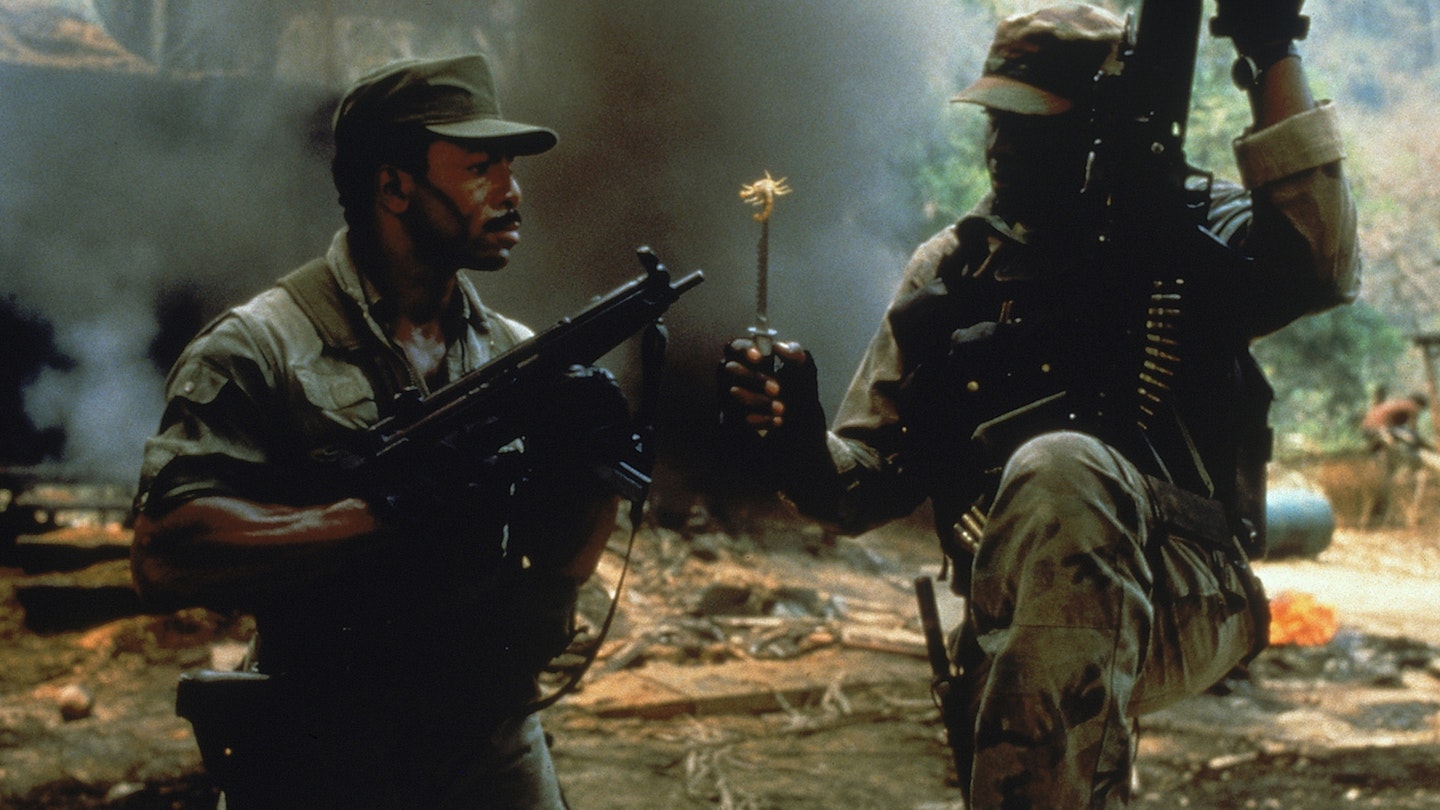
Back to the homoerotic subtext here: the relationship between Mac and Blain is one to keep an eye on. The moment in the film, post Blain's combustion, when Mac tells Dutch "He was… my friend," is pretty loaded, and Mac's behaviour here, charging off after the Predator alone – Dillon is lagglng behind, trying to fetch him back - is rooted in those feelings. Slightly earlier, to hammer the point home, Duke even gets an emotional, moonlit soliloquy, toasting his special friend on his journey beyond the mortal coil. The film's novelisation was written by the gay poet Paul Monette{
Billy logs off

This is Sonny Landham's big moment, and the pay-off for a strange thread running through the film that suggests some sort of supernatural connection between Billy and the alien. Billy's is the only off-screen death, as he stands to face the pursuing creature while ritually slicing his chest. All we hear is his final scream, while the POV shot, from the perspectives of Dutch,
Poncho and Anna, shows nothing but jungle. It's a subtle echo of Anna's earlier line about Hawkins: "The jungle came alive and took him." Landham, incidentally, was not quite so spiritual
as his on-screen counterpart. His temper was so volatile that he had a bodyguard on set, not to shield him from the rest of the crew, but to protect the crew from him.
Anna escapes
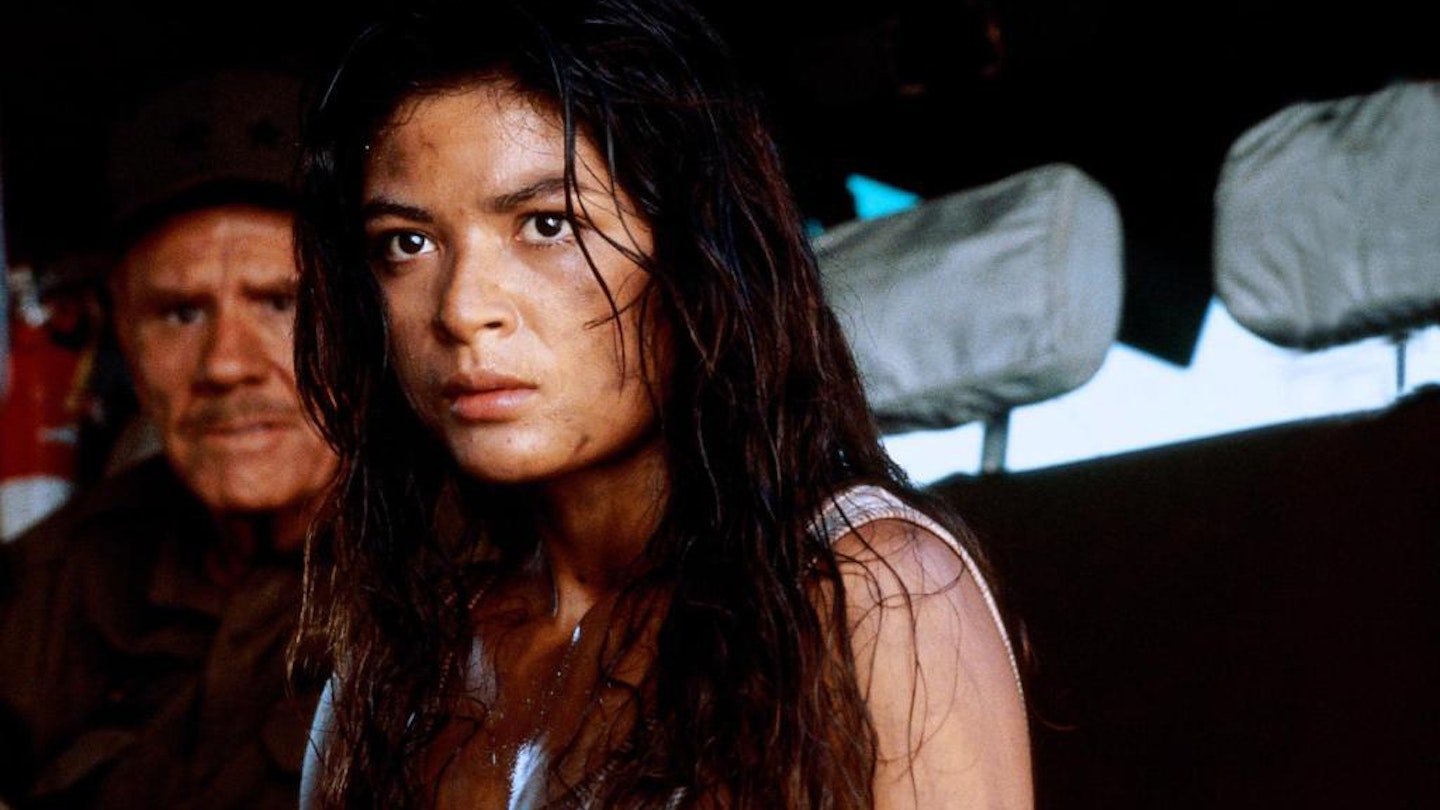
As she runs east alone to the rendezvous point, this is the last we see of Anna until she shows up in the helicopter at the end (having, in fact, got to da choppa). A couple of scenes were planned for her in Predator 2, but her reappearance was ultimately limited to a brief cameo on a videotape, advising the US military.
The river slide
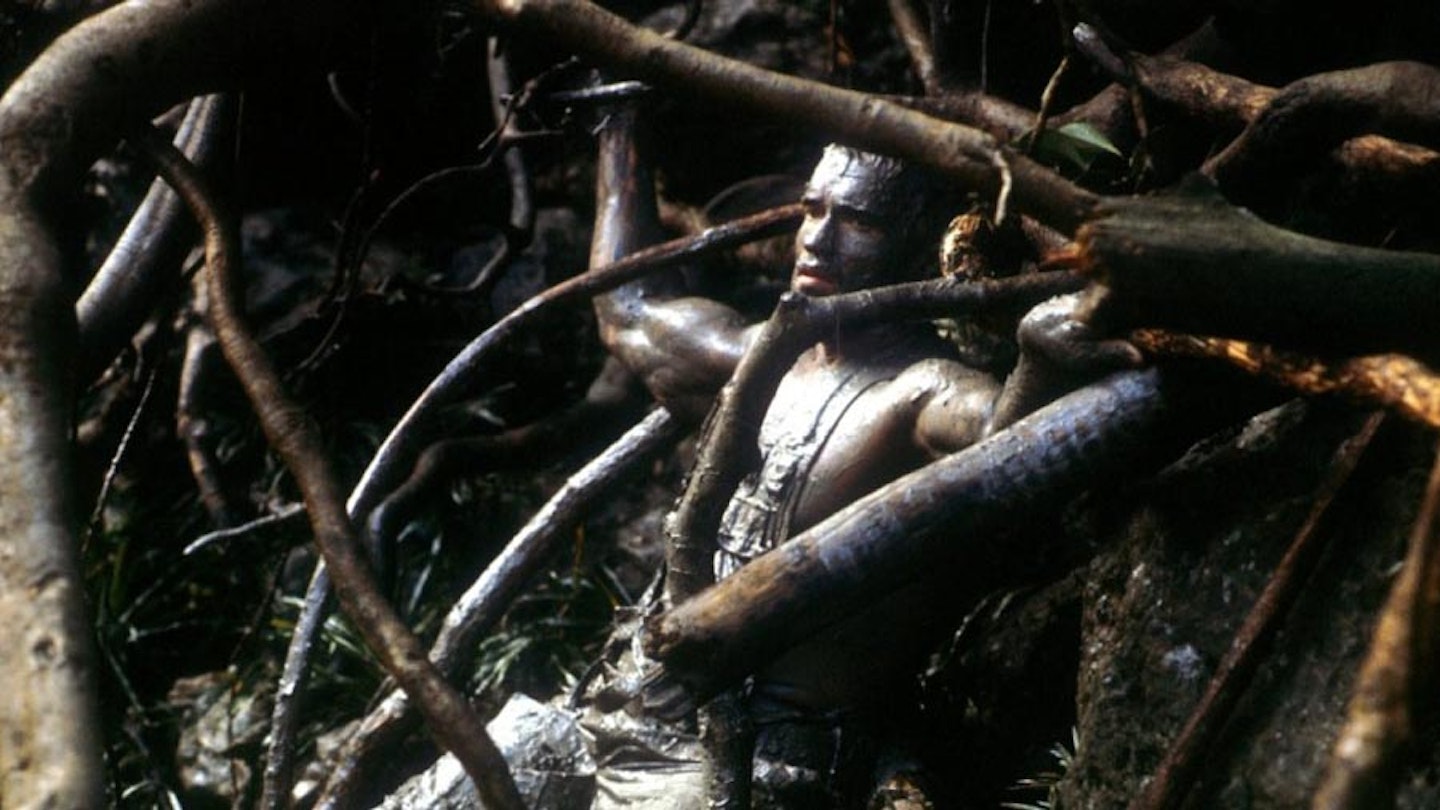
After going off-road to draw the Predator away, Dutch falls back into the river. His slide through the jungle was achieved by putting Schwarzenegger on rails and firing him downhill. Baxley and his team rigged up the system, which was designed "to put the audience in the middle of the action". The rig was tested with a crew member, and found to be satisfactory, but it behaved rather more erratically when the much heavier Arnold was strapped to it. "We told him it'd be fine," said Baxley, "and then at the other end he was like, 'BAX!'" The spectacular fall into the river, meanwhile, saw the production's only casualty: the stuntman threw his knee out.
The final showdown
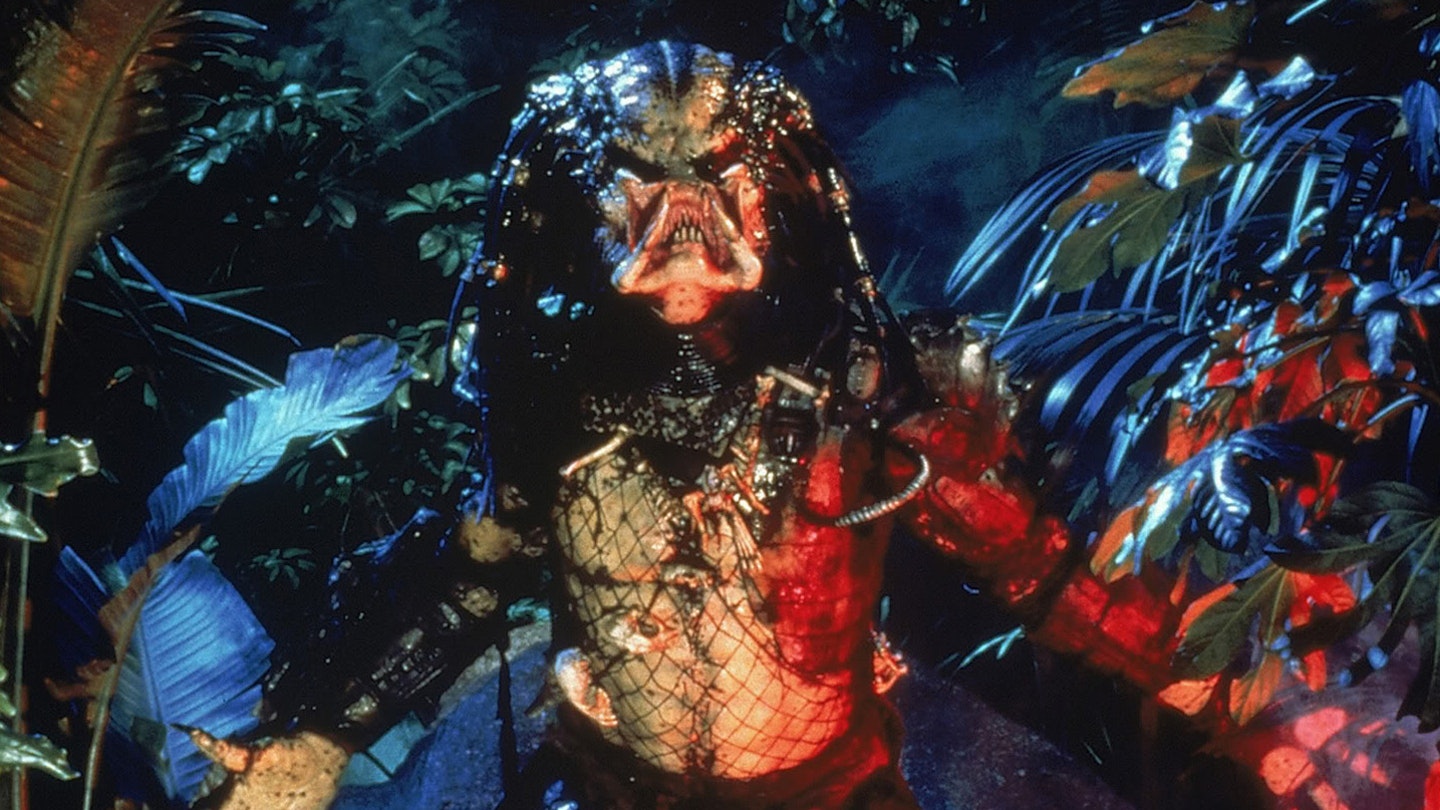
Those impotent guns, like the physicality of the cast, are ultimately irrelevant: Arnold ends the film as a primitive jungle warrior. He even gets a Tarzan roar. And this is where we finally get the full reveal of the Predator, played by the late Kevin Peter Hall. The problems leading to this moment are well documented, with the Stan Winston-designed creature replacing, at very short notice, the original version, which wouldn't have been out of place in an ‘80s Doctor Who episode.
Dreadlocks were in that year!
"We opened the box and thought, 'Boy, are we in trouble,'" recalled McTiernan. "They had to shut down production for a while and reimagine the shape of the Predator," Helfrich says. "I was very proud of the Predator-vision and the heat-vision, and the invisibility effects; those had all been thoroughly worked out in pre-production. But the creature itself was the one thing that hadn't been fully developed prior to shooting. I have a picture somewhere of someone (actually Jean-Claude Van Damme, in an early, pre-Bloodsport role from which he either jumped or was pushed) in this ridiculous red lobster suit." Interestingly, the novelisation, written too early to reflect the new Predator, presents a creature that can shapeshift, occasionally taking the form of jungle animals. "Luckily, they eventually came up with a winner," laughs Helfrich. "Dreadlocks were in that year!"
What happened to Dutch?
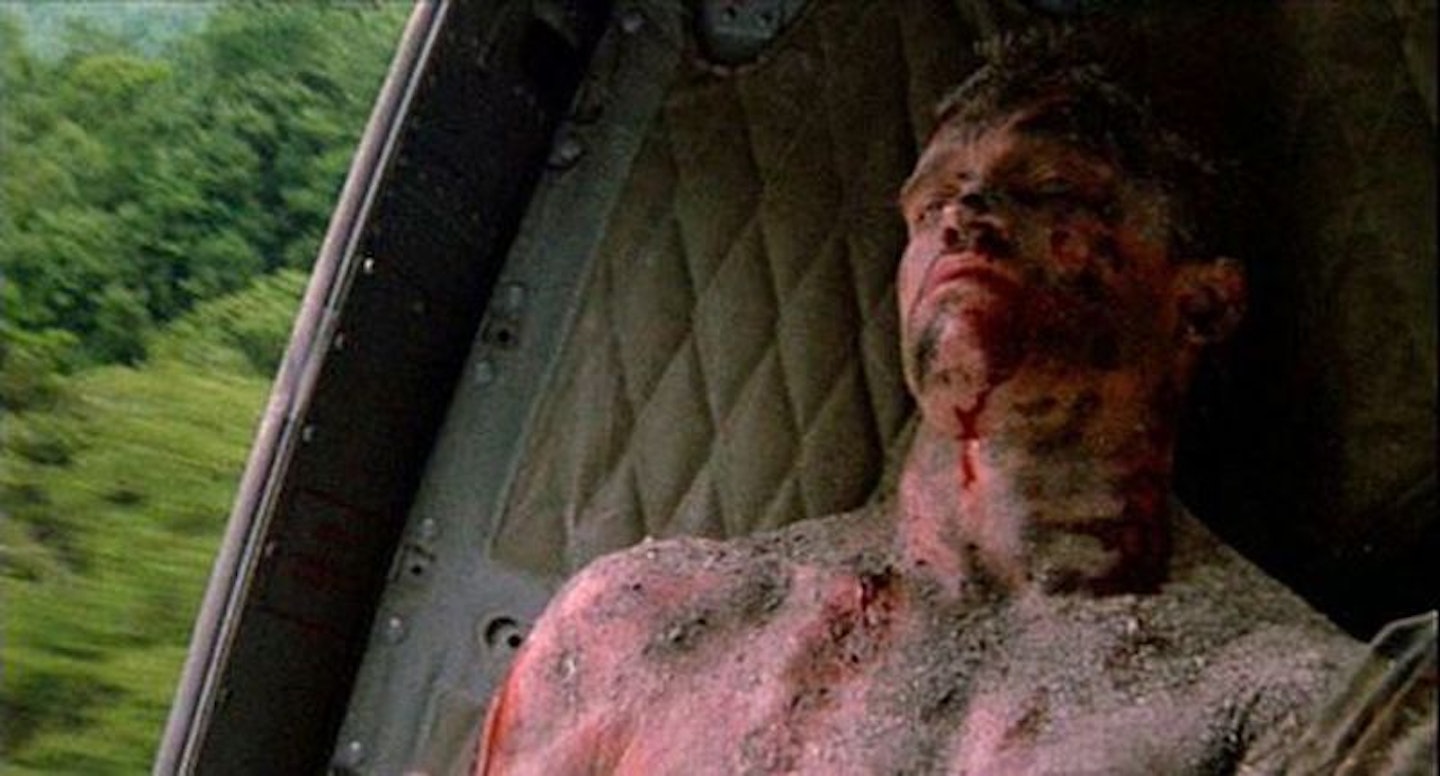
Dutch, choppered off into the sunset, has survived being battered, bloodied and nuked, but what happened to him next? In practical, real-life terms, the story is simple: Schwarzenegger didn’t want to return. According to some reports, he disliked the city setting of Predator 2, but others say it was just about the loot: "We should have had Arnold in the movie," said producer John Davis, "but the deal broke down over $250k. Which was a shame."
We learn something of Dutch’s fate from Gary Busey’s Predator 2 DEA agent Peter Keyes, who reports on Dutch’s post-jungle debriefing. This is expanded in the novelisation, with Keyes recalling speaking to a radiation-poisoned Dutch in hospital, before Dutch escaped, never to be seen again.
Mark Verheiden’s Dark Horse comics run with the "Dutch is missing" angle. They involve (ahem) Dutch’s brother, another Austrian Oak in this case working as a detective for the NYPD, encountering his own Predators on Dutch’s trail. There were three of these stories, which never reached a conclusion. General Philips is a regular character, and Dark River brings back the chopper pilot from the end of Predator, who suggests that Dutch was found to have contracted an alien disease from the Predator’s blast and was subsequently returned to the jungle and abandoned there. It turns out to be a lie, but we’re liking the idea of a journey upriver leading, with extreme prejudice, to a Kurtz-like Major Schaeffer.
Strangely, the Kurtz-ish Noland, played by Laurence Fishburne in Nimrod Antal's Predators, was a role originally earmarked as Danny Glover’s Mike Harrigan from Predator 2. But a cliffhanging cameo from Dutch was originally mooted too. He'd have arrived at the end of the film on a Predator ship. What? How? We may never know...
